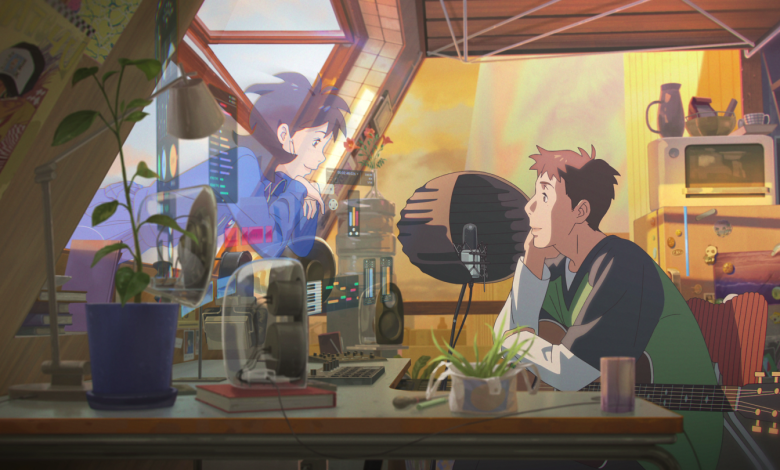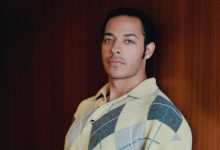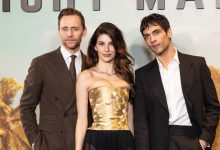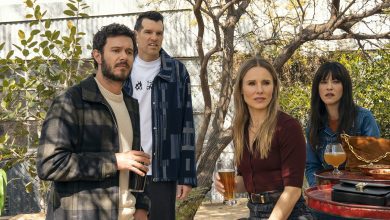‘Lost in Starlight’ Director Han Ji-won on Blending Romance and Sci-Fi for Netflix’s Breakthrough Korean Animated Feature

Lost in Starlight marks a defining moment for 36-year-old filmmaker Han Ji-won — and a rare breakthrough for Korean animation on the world stage.
A vividly realized sci-fi romance set in Seoul in the year 2050, the film is Netflix‘s first original animation produced in South Korea, and it has won praise from none less than the country’s most decorated director. In statements accompanying the film’s global release on May 30, multi-Oscar winner Bong Joon Ho hailed the feature as “a visual masterpiece that takes you around the universe,” highlighting Han as a new talent to watch while signaling a long-awaited coming-of-age moment for the country’s animation sector.
South Korea has long been known as an animation powerhouse, but mostly for behind-the-scenes work. For decades, local studios quietly toiled as production subcontractors on Japanese anime and Hollywood features — cranking out clean-up, in-betweening, and digital compositing for global franchises — while Korean-made animation rarely reached an international audience under its own banner. Lost in Starlight‘s success hints at the outlines of a coming animated chapter in the ever-breaking Korean cultural wave.
A genre-fluid imagining of Seoul in the not-so-distant future, Lost in Starlight follows two young dreamers separated by 140 million miles. Nan-young (voiced in Korean by actress Kim Tae-ri), a space-bound astro-botanist, departs on a mission to terraform Mars, leaving her quiet, music-obsessed boyfriend Jay (voiced by Hong Kyung) behind on Earth. The film unfolds as a lyrical meditation on long-distance love, personal ambition, and the delicate emotional gravity that holds people together. Visually, it is suffused by luminous, hologram-filled cityscapes, soft water colors and interstellar dreamscapes — a highly accomplished style that blends some of the grounded warmth of Studio Ghibli’s hand-drawn character design work with the cosmopolitan shimmer of a Makoto Shinkai sunset.
Shortly after Lost in Starlight‘s debut, The Hollywood Reporter connected with Han to discuss her journey of bringing Lost in Starlight to screen, her animation influences, what Bong’s praise has meant to her and the unbridled potential of Korean animation.
How did Lost in Starlight begin? What was the original inspiration behind the project?
Some years ago, I worked on a branded film — Beautiful Moments, for the Korean jewelry company StoneHenge — and for that project I was given a lot of creative freedom. I was able to explore ideas I’d had been interested in for a long time — things like the female dream, astronauts, family stories, childhood, space, and music. That film incorporated all of those elements, and it ended up getting a lot of attention. Based on that, Climax Studio contacted me, and I had the chance to expand on those themes.
At the time, I was dating, so I was very interested in love, and I wanted to incorporate that into my storytelling. Luckily, the production company was interested in letting me explore all of these things, and that’s how the story began to take shape.
Lost in Starlight is set in a futuristic version of Seoul, and there are so many imaginative visual details throughout the film’s world. How did you approach depicting Seoul in 2050? It felt to me like a clean, fresh version of Blade Runner.
That’s actually a quite accurate way to describe it — a clean version of Blade Runner. I set it against a realistic backdrop as well. In Korea, there’s an area of Seoul called Eulji-ro, which is popular right now with both tourists and artists. It has this very cyberpunk, retro-industrial vibe. It used to be full of manufacturing workshops, metal shops, garages — very gritty — but now a lot of indie artists do performances and collaborative projects there. Jay, in the animation, works around there. And there’s also Sewoon Arcade, where his record shop is based — that’s a real location in Seoul too. So I started with those realistic backdrops and added imagination to create this future landscape.
You mentioned the “cleanliness”— that really resonates with what I wanted to express. I didn’t want to depict a dark or apocalyptic future. I imagined a future where we’ve done our best to protect the environment and things turned out okay. I wanted the setting to feel like a place that’s good to live in. So blending that retro charm with futuristic optimism, rooted in real locations, was very intentional.

‘Lost in Starlight’
I also appreciated the way female empowerment is expressed in the film. The two lead characters each go on parallel journeys of self-overcoming, but there’s such a striking contrast: Nan-young goes all the way to Mars to uncover the mystery of her mother’s disappearance, braving storms and mortal danger. Jay, meanwhile, is mostly just shy, trying to work up the courage to sing in public.
That’s a fair point, but I don’t necessarily think Nan-young’s achievement is bigger than Jay’s. Visually, of course, Nan-young’s journey seems more dramatic—going to Mars and confronting her inner trauma—but I believe that revealing your voice in front of a large audience is also an act that requires great bravery.
As a female creator, I did want to show how women overcome barriers and achieve things, but I think the contrast you noticed might just have more to do with their professions — astronaut versus musician — rather than a hierarchy of bravery. What I really wanted to show is that growth can come from epic journeys, but also from the small, intimate challenges.
Korea has a long history of doing skilled contract work for international studios, but relatively few original Korean animated features have broken through globally. Could you describe the Korean animation scene right now? Should viewers expect more exciting original work to come?
As you said, Korean studios have long taken on outsourced work from the U.S. and Japan, mostly in the production stage, rather than pre-production. But in recent years, more companies are building dedicated teams to work on design and story development. There’s a real push now to create original IP. Some companies are even forming in-house story and webtoon teams.
Globally, most animated works are based on existing webtoons, comics, or games, rather than original IP. So a film like ours — based on an original story — is still relatively rare. But there are some recent examples, like The Exorcism Chronicles (2024) and King of Kings (2025). These are good signs for both studios and creators.
My own background is in independent animation, and I believe Korea is quite strong in that area. So the potential for synergy in this moment between indie animators and Korean studios is really exciting. But animation takes time, and long-term support is essential — so that’s something we still need more of before the scene can really take off.

Kim Tae-ri, Han Ji-won and Hong Kyung attend Netflix’s first Korean animated film ‘Lost in Starlight’ press conference at Lotte Cinema Konkuk University in Gwangjin-gu on May 27, 2025 in Seoul.
iMBC/Imazins via Getty Images
Do you think Korean animation has any specific qualities — visual or thematic — that noticeably set it apart from Japanese anime and the U.S. studio animation that viewers around the world know so well?
It’s hard to generalize, because it’s been a long time since Korean feature animation was active in a big way, and even the works that exist are quite diverse in style.
My film is 2D, whereas most commercial work recently has leaned toward 3D. So even within Korea, there’s a visual gap depending on the technique. But I didn’t want Lost in Starlight to look like Japanese anime. I wanted it to reflect how young Korean people today look, dress, and do makeup. That Korean-ness was important to me.
At the same time, I incorporated some Western-style drawing elements. It’s a blend. Rather than speaking for all of Korean animation, I just hope this work can offer a new kind of reference point for global audiences to understand what Korean animation can be.
During the long, five-year process of making this film, what were some of the biggest moments of doubt for you?
This film is quite unique. It blends sci-fi with grounded emotion, and it’s not confined to a single genre. That meant we had to maintain a very delicate balance — across story, music, visuals, production, everything. We worked with both in-house and external teams, and the outside partner had their own production pipeline, which we had to adjust to fit our vision. That required extensive communication. Sometimes we’d ask ourselves, “Do we really have to go this far?” But in the end, we’re proud we did, because that attention to detail is what made the final product satisfying. Acheiving that delicate genre balance was the hardest part — but also what made it special.

‘Lost in Starlight’
There was something subtly fresh in the character design for me — perhaps that came from seeing Korean fashion and contemporary culture in this medium for the first time, as you mentioned. The color palette and the handling of light and landscapes also reminded me a lot of Makoto Shinkai. Where do you identify your influences?
Like most animators, I’ve been influenced by the works I loved growing up—and Makoto Shinkai is definitely in there. But when it comes to character expression and storytelling, I’ve also drawn from others — like Hayao Miyazaki, who really inspired me to pursue animation in the first place. I was also deeply influenced by Isao Takahata’s Only Yesterday, which focuses on very realistic, fully dimensional characters. Satoshi Kon also had a strong impact on me, especially with his realistic visual style. For Lost in Starlight, I worked with a character designer. I shared my artistic preferences and early drafts, and his style aligned closely with mine. That collaboration really helped create the unique, realistic look we achieved.
Netflix has shared a quote from Bong Joon Ho calling your film “a visual masterpiece that takes you around the universe.” How did that come about?
Our production company showed him the film and asked for his thoughts. Of course, director Bong is someone I respect enormously, so it was a huge honor to receive that praise from him. I heard that he also remarked on how well the film captured the feeling of contemporary life in a futuristic setting, and he appreciated the drawing style. I was very humbled and honored to hear that.
It’s been that Bong is actually at work on a feature animation himself — an adult animation titled The Valley, which will be his next film. Given how the Korean Wave has impacted so many areas of global culture — pop music, fashion, cinema, TV drama — do you think animation could be the next frontier? Someone of Bong’s statures jumping into the arena could give the Korean animation industry a big boost, no?
Absolutely. It’s been a long-standing dream for many of us in animation for Korean works to go global. For years we said the industry was struggling and that our breakthrough would probably be a long ways off — but then webtoons became globally successful, proving our creative capacity.
If someone like Bong Joon Ho gets involved in animation, of course that would give us a huge boost. That said, 2D and 3D animations operate under different business models — the investment and marketing strategies totally differ — so we can’t treat them exactly the same. But I believe we’re ready to show the world that Korean animation has a rich tradition, high standards, and strong creative voices. If we’re given time and support, I truly believe we can build another K-wave — this time in animation.

‘Lost in Starlight’
Source: Hollywoodreporter
HiCelebNews online magazine publishes interesting content every day in the movies section of the entertainment category. Follow us to read the latest news.
Related Posts
- Joe Manganiello, Who Starred in ‘Pee-wee’s Big Holiday,’ Breaks Down in Tears Remembering Late Friend Paul Reubens: “I Was His Biggest Fan”
- U.K. Culture Secretary Talks AI Regulation at London Media Conference
- Alice Cooper's 3 Children: All About the Rock Star's Daughters Calico and Sonora and Son Dash
- Diddy’s Defense Accused of Humiliating Ex-Assistant in Court Amid Suggestion She’s Lying
- Gotham TV Awards: Winners List (Updating Live)





